Berry bushes need to be properly prepared for the winter to ensure a good harvest for next year. Gardeners on time prepare the ground, make useful dressings, trim the bushes. Preparing gooseberries for winter includes treatment for fungal diseases and harmful insects. Thanks to regular agricultural activities, gooseberries will safely endure the cold and give a good harvest in the summer.
Content
The need for autumn care activities
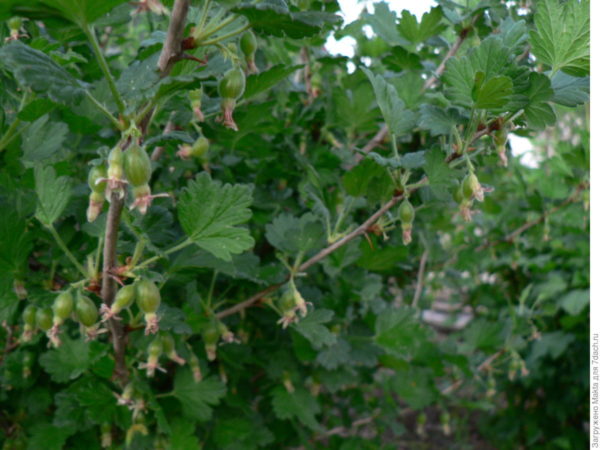 Erroneous judgment is common among gardeners. They believe that if you collect all the berries from the bush in time, you can not worry about it until spring. This is not true. Autumn gooseberry care is necessary, otherwise over time the berries will become small and rare. In the absence of care, fruiting may cease altogether. Agrotechnical measures are carried out in the following sequence:
Erroneous judgment is common among gardeners. They believe that if you collect all the berries from the bush in time, you can not worry about it until spring. This is not true. Autumn gooseberry care is necessary, otherwise over time the berries will become small and rare. In the absence of care, fruiting may cease altogether. Agrotechnical measures are carried out in the following sequence:
- weeds and fallen leaves are removed;
- conduct sanitary pruning branches;
- treat the shrub with fungicides and insecticides;
- dig the soil;
- bring useful fertilizers to the ground;
- mulching;
- in the cold regions they shelter a bush for the winter.
Root treatment
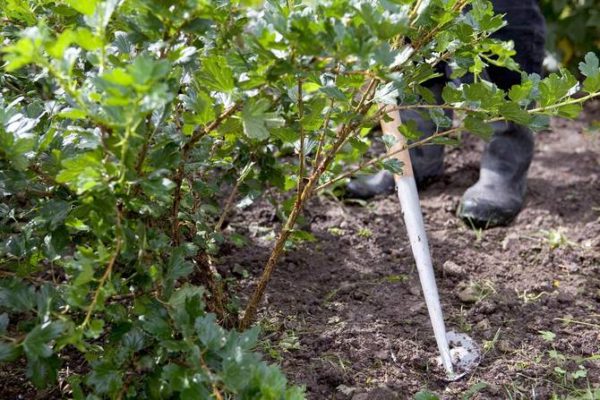 Gooseberry care in the fall begins with garbage collection in the root zone. If there is too much foliage, it needs to be removed and burned: it can contain dangerous fungal spores and larvae of harmful insects. Gooseberries are considered unpretentious shrubs, but weeds interfere with its full growth. Formed at its roots, weeds provoke high humidity. Spores of fungi actively multiply in a humid environment and affect plants.
Gooseberry care in the fall begins with garbage collection in the root zone. If there is too much foliage, it needs to be removed and burned: it can contain dangerous fungal spores and larvae of harmful insects. Gooseberries are considered unpretentious shrubs, but weeds interfere with its full growth. Formed at its roots, weeds provoke high humidity. Spores of fungi actively multiply in a humid environment and affect plants.
Around the roots, weeds and wood lice are removed. You need to work carefully, slowly. If weeds are pulled out quickly, the root system of the shrub can be harmed. They are carefully dug up, trying not to touch the roots.
Shrub pruning
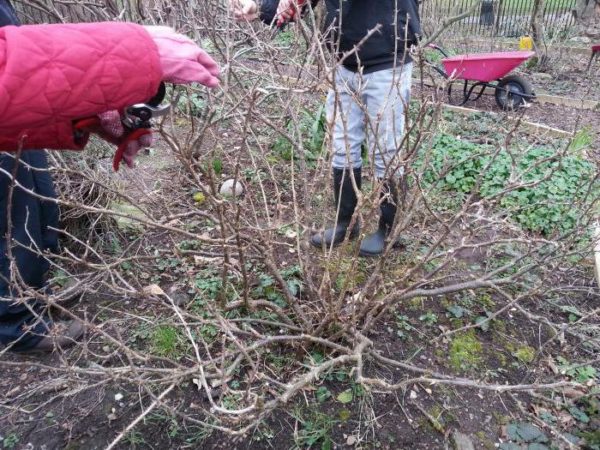 Pruning is an important part of gooseberry care in the fall. Without it, full preparation for the winter is impossible. It is necessary to remove broken, dry and diseased shoots. Also cut off the branches that spread on the ground. This helps to avoid contact of the berries with the soil and their decay.
Pruning is an important part of gooseberry care in the fall. Without it, full preparation for the winter is impossible. It is necessary to remove broken, dry and diseased shoots. Also cut off the branches that spread on the ground. This helps to avoid contact of the berries with the soil and their decay.
Trimming is carried out every year, starting with cutting thin and weak lashes. Leave from 3 to 4 main shoots that will bear fruit. Suitable time for the event is mid-autumn. For manipulation you will need:
- sharp secateurs;
- thick gloves;
- alcohol solution;
- garden var or paint.
Gooseberries are very prickly, so you need to get tight garden gloves. Secateurs should be sharp. If he cuts the branches poorly, this causes severe discomfort to the shrub.
When examining a shrub, the gardener determines the shoots that prevent him from growing. They immediately get out of the picture with their random growth. After removing the extra branches, the broken ones are cut and those that lie on the ground. After that, the gardener starts thinning. Abundant growth, which often forms inside shrubs, should not thicken the crown. If the bush is too thick, air circulation is disturbed in it.Violation of air circulation contributes to the development of fungal diseases.
The next stage of pruning is rejuvenation of the bush. In order to rejuvenate and grow the lateral branches, several five-year-old stems are cut, leaving them strong, young and healthy. At 6-7-year-old bushes, 5 to 6 stems are left, which are harmoniously arranged on the crown.
Disease prevention
Autumn is a time for activating dangerous diseases. It is important not to miss their start and take timely action. All bushes are carefully examined for damage by fungal spores and insects. In the absence of signs of the disease, preventive treatment with fungicides is necessary. If a diseased shrub is found in the planting, the gardener evaluates how much he is affected by the fungus.
It happens that a fungus completely affects one or more shrubs. It will not be possible to save them. They are dug up and completely burned so that they do not infect other plants. With the appearance of small foci of the disease, gooseberries can be treated with fungicide, having previously cut off the diseased branches.
One of the best fungicides is Bordeaux liquid. The concentration of the solution is 3%. Copper sulfate is also used in a ratio of 25 to 30 g per large bucket of water (10 l). The antifungal agent Topaz is released in ampoules. Before use, one ampoule of Topaz is dissolved in 10 l of water.
The drug Fitosporin is used even if the shrub looks healthy. Fitosporin promotes the formation of beneficial microflora and kills harmful bacteria.
Insecticide treatment of gooseberries in the fall is also important. 80 or 85 g of malathion are dissolved in a large bucket of water. You can use the drug Actellik. The concentration of the solution is 15 ml per 10 liters. To treat bitoxibacillins, you need to take 100 g of the substance and dissolve it in 10 l of water.
When processing, do not forget to water the solution around the gooseberries with a solution to destroy harmful microorganisms, larvae and spores of pathogenic fungi.
Shrub digging rules
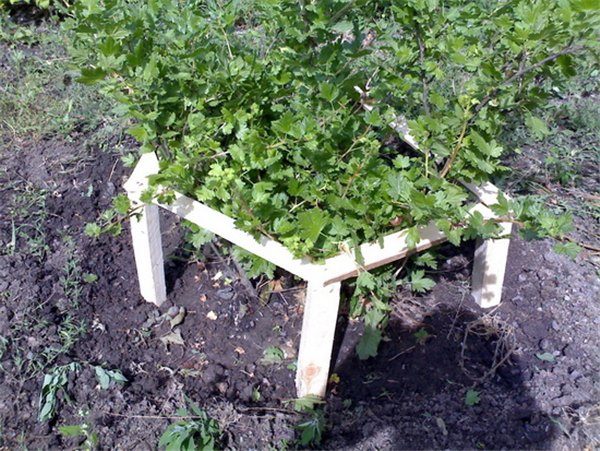 Digging gooseberries in the fall - a difficult task - due to the specifics of its growth and development. If the shoot consists of several bushes, they can be located tightly to each other. This makes digging difficult, but you cannot refuse it. Larvae and fungal spores are in the ground and quietly affect the root system.
Digging gooseberries in the fall - a difficult task - due to the specifics of its growth and development. If the shoot consists of several bushes, they can be located tightly to each other. This makes digging difficult, but you cannot refuse it. Larvae and fungal spores are in the ground and quietly affect the root system.
The ground near the trunk circle is dug up to one shovel bayonet. If many shoots spread along the ground, they are partially cut off. The remaining branches are tied with a rope. After digging it needs to be removed.
Gooseberry fertilizer in the autumn season
When caring for gooseberries, it needs to be fed with fertilizers on time. They are introduced in the spring, summer and autumn. From autumn fertilizer depends on the yield and size of fruits in the coming summer. Nutrients help the shrub recover strength after the summer season. Autumn fertilizers are needed to strengthen the root system and stimulate kidney growth.
If you transfer the dressing to September, the earth will cool, and the roots will cease to absorb the necessary components.
For autumn top dressing of bushes apply:
- phosphates - strengthen the roots and contain healthy carbohydrates;
- potassium - removes excess fluid from the shoots and increases their resistance to cold;
- organic matter - to increase productivity (all types of manure, plant compost);
- wood ash - it contains minerals.
Mulching technique
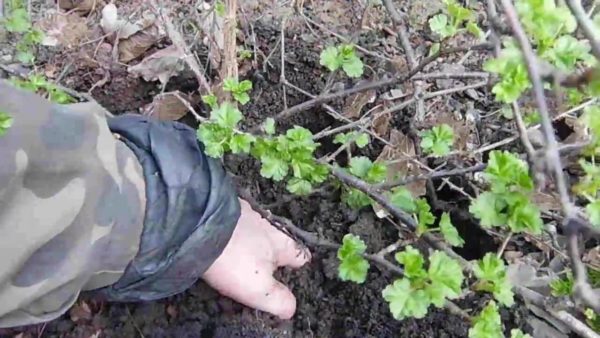 The best mulch is compost or peat bogs. It will not allow violent growth of weeds and will retain valuable moisture in the ground. Mulching protects the root system from the cold.You can make a mixture of small sawdust and pine bark, sprinkling it around the gooseberry trunks. The mulch layer should be 10-12 cm.
The best mulch is compost or peat bogs. It will not allow violent growth of weeds and will retain valuable moisture in the ground. Mulching protects the root system from the cold.You can make a mixture of small sawdust and pine bark, sprinkling it around the gooseberry trunks. The mulch layer should be 10-12 cm.
Watering
If the autumn is rainy, watering the bushes is not necessary. Gooseberries are watered only in warm and dry weather. The irrigation rate for one bush is 30 liters. Water is fed into a groove dug around a gooseberry. After absorbing water into the ground, the hole is filled up.
Winter Shelter Technique
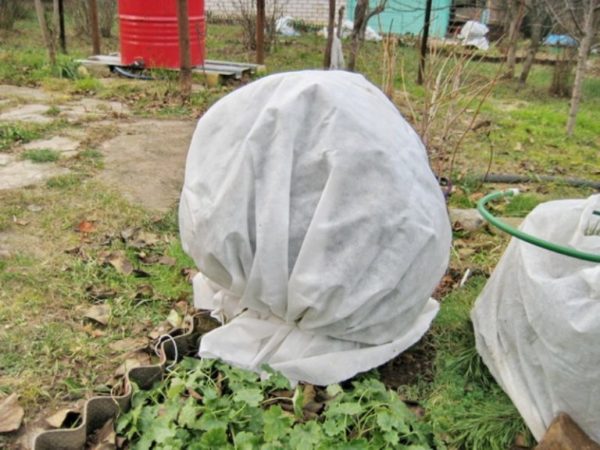 To protect against frost, the branches are carefully bent to the soil and fixed with pegs. In the southern regions, mulching is enough for shelter. If winter is snowy and frosty, gooseberries are spudded with the first snow. In severe frost, dry grass is scattered on the shoots and covered with cardboard or plywood shields.
To protect against frost, the branches are carefully bent to the soil and fixed with pegs. In the southern regions, mulching is enough for shelter. If winter is snowy and frosty, gooseberries are spudded with the first snow. In severe frost, dry grass is scattered on the shoots and covered with cardboard or plywood shields.
The task of the gardener in the fall season is to prepare the gooseberry for the winter. Thanks to the good preparation, the shrub will always look well-groomed and healthy, delighting with a harvest of sweet and ripe berries.

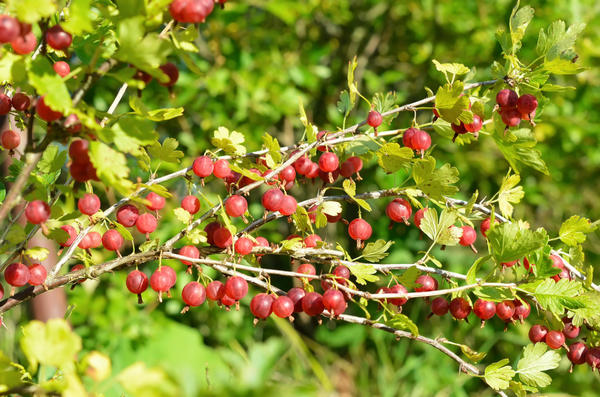
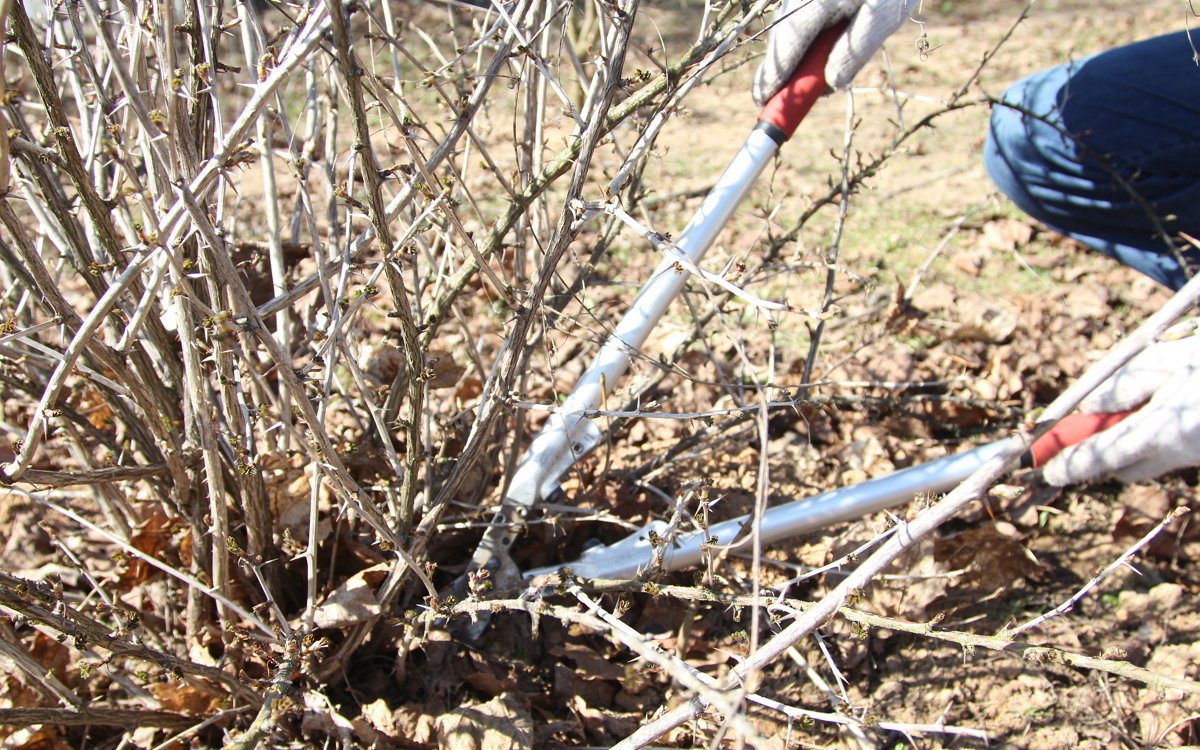
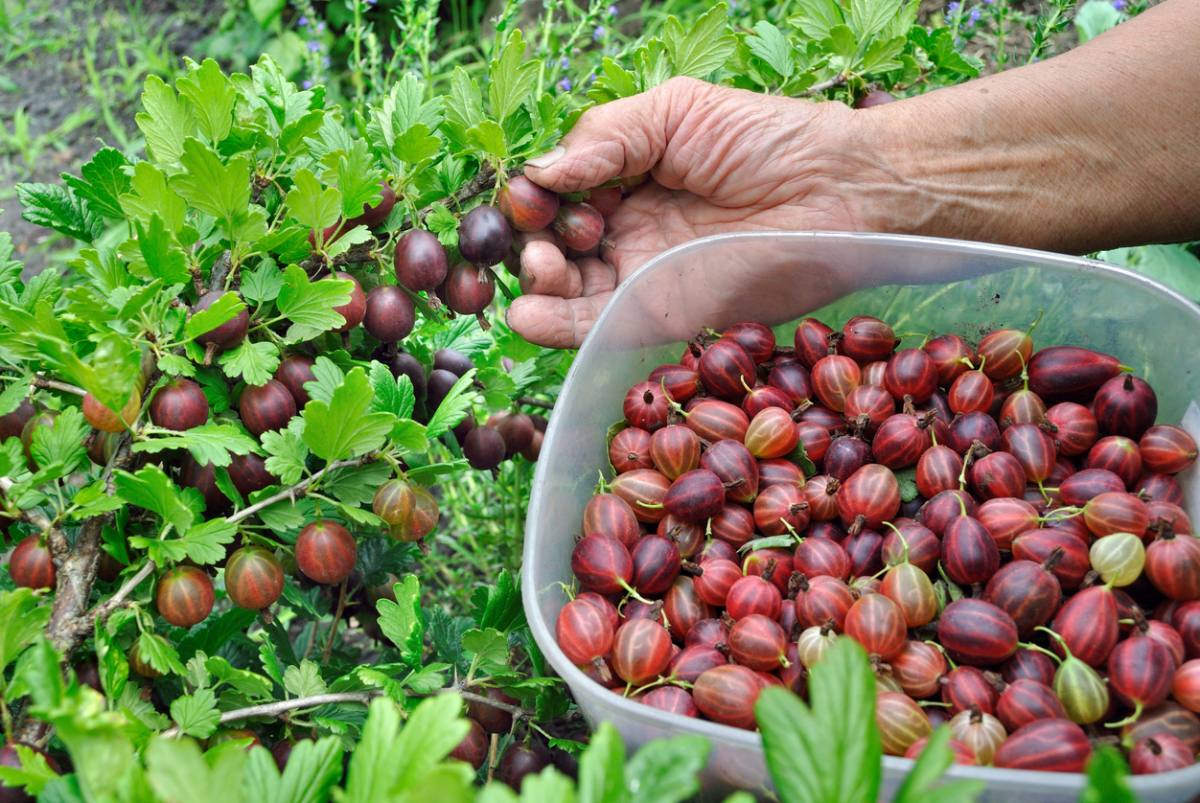
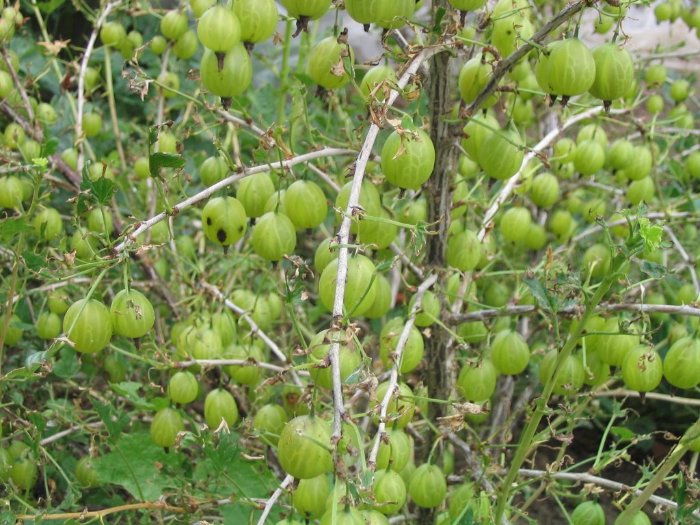 What if gooseberries have eaten all the leaves? Simple tools come to the rescue
What if gooseberries have eaten all the leaves? Simple tools come to the rescue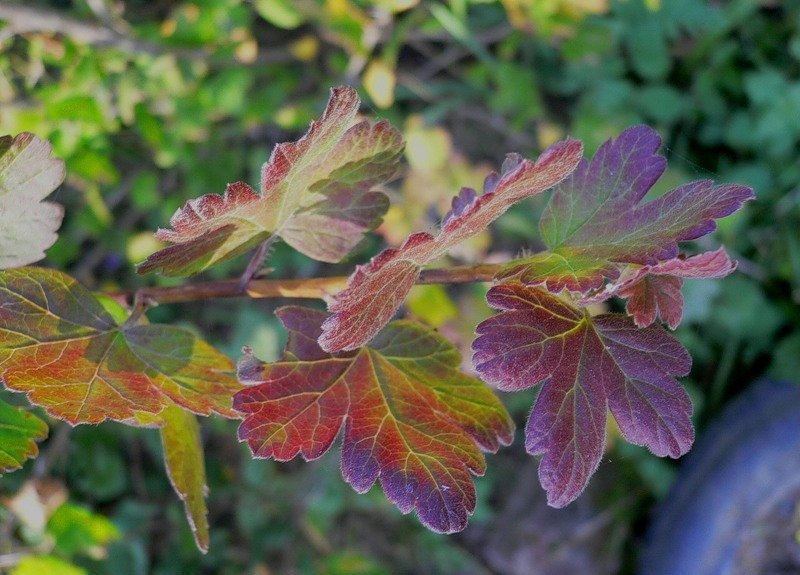 What does the red border on gooseberry leaves mean and what needs to be done
What does the red border on gooseberry leaves mean and what needs to be done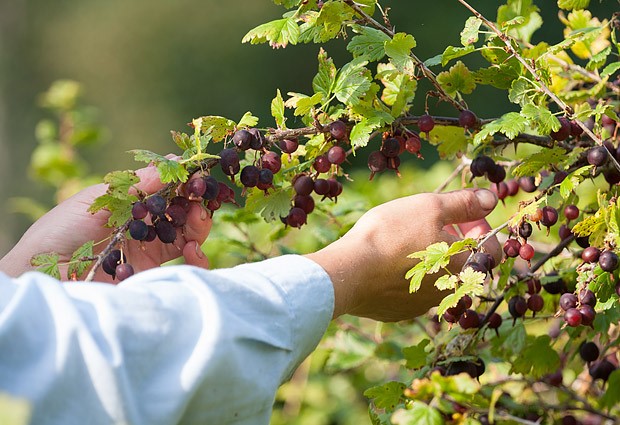 That's the end of summer, it's time to feed gooseberries after harvest
That's the end of summer, it's time to feed gooseberries after harvest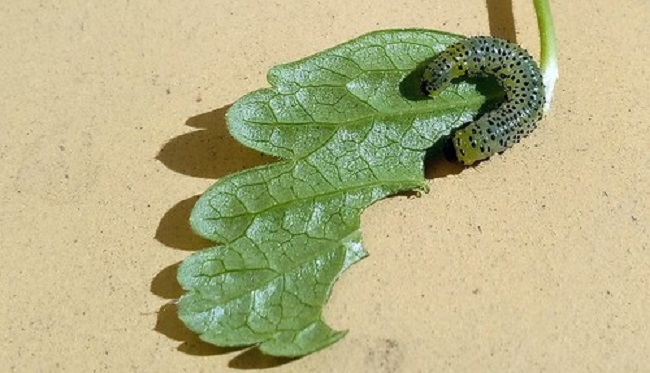 To save gooseberries from the invasion of caterpillars will help vinegar, mustard and ammonia
To save gooseberries from the invasion of caterpillars will help vinegar, mustard and ammonia